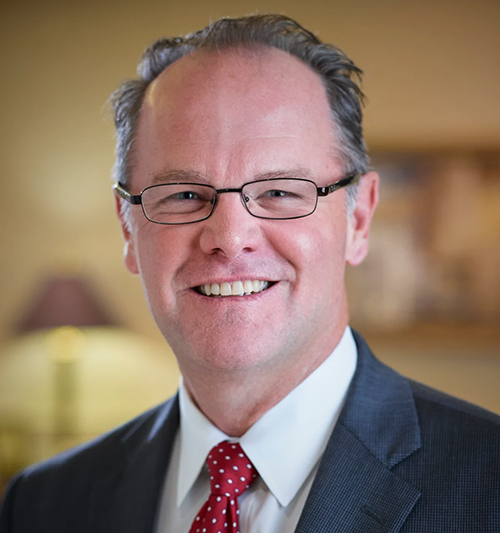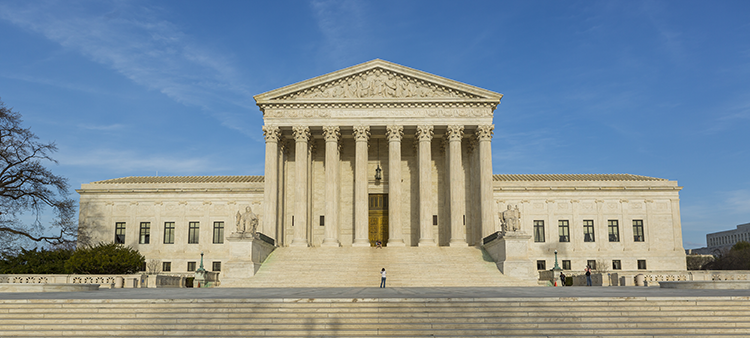Debt Management: ABA advocates for student loan reforms in a changing landscape

Shutterstock
For more than two decades, the ABA has sounded the alarm about the devastating effects of excessive student debt on law students and newly minted lawyers while actively engaging in advocacy efforts to provide relief.
The severity of the situation is escalating: Three out of four law school students now graduate in debt, and the average law school graduate owes $160,000.
Moreover, the debt is having a profound effect on young lawyers’ life decisions and mental health as well as on the legal profession. In an ABA Young Lawyers Division survey released in 2021, roughly half of the respondents said they were postponing purchasing a home and starting a family due to debt; two-thirds reported their loan debt caused them to feel anxious or stressed; and over half reported it has caused them to feel regret or guilt.
The last year has seen multiple developments in Washington, D.C., on the student debt front, affecting millions of student loan recipients. Throughout this process, the ABA has played a significant role in advocating for student loan borrowers facing financial distress because of loan payments.
In October, after several extensions, the three-year COVID-19-related student loan payment “pause” ended after the passage of the Fiscal Responsibility Act of 2023. The ABA actively advocated for student loan debt forbearance, including repeatedly urging extension of the program.
President Joe Biden’s attempt to forgive roughly $379 billion in student loan debt—an initiative backed by the ABA—was overturned by the U.S. Supreme Court in Department of Education v. Brown in June. After the court’s action, the ABA issued a statement stressing its support of programs that help borrowers experiencing financial hardship due to student loan obligations, including suspending or forgiving some of those loans.
Rapid response
Almost immediately after the Supreme Court’s decision, the Biden administration announced it would seek to achieve the same goal as the initiative rejected by the court, but based on a separate federal statute: the Higher Education Act. The Higher Education Act requires a more lengthy and formal rulemaking process to forgive up to $20,000 for Pell Grant recipients with loans held by the Education Department and up to $10,000 to non-Pell Grant recipients. Recipients are eligible if their individual income is less than $125,000 per year or less than $250,000 per year for households.
Two months later, the administration launched the Saving on a Valuable Education plan to lower monthly payments for eligible borrowers, especially as they resumed student loan repayments in the fall. This plan calculates payments based on a borrower’s income and family size—not their loan balance—and forgives remaining balances after a certain number of years.
In further developments, new regulations affecting the federal Public Service Loan Forgiveness program have opened that program to more borrowers.
Enacted in 2007, PSLF forgives eligible student loans for those who make their monthly payments while working in qualifying public sector jobs for a minimum of 10 years. But regulatory issues and other problems plagued the Department of Education’s management of the program, resulting in relatively few borrowers qualifying for student loan discharge.
The ABA played a key advocacy role in the creation of PSLF and has long advocated for improvements to the program. In 2020, the ABA successfully settled a 2016 lawsuit against the Department of Education after the court ruled the agency had improperly restricted employment eligibility for PSLF.
In 2022, the Education Department effectively expanded eligibility for PSLF by changing program rules to remove historical barriers to borrower forgiveness. For example, the Education Department changed how monthly payments are counted toward the minimum of 120. Under the original rules, only on-time payments were counted. Under the new rules, payments count even if they are late, part of an installment plan or other variations. Previously, the duration of deferment or forbearance did not count toward program requirements. Today, borrowers have a way to seek retroactive credit for those periods of suspended payments.
The changes had a substantial impact. In the first 15 years after the PSLF program’s creation, only 7,000 people had received loan forgiveness. But just 18 months after the changes, in July 2023, the Education Department announced that number increased to 653,800 borrowers receiving $45 billion in loan forgiveness.
The ABA has steadfastly taken a leading role advocating for programs that offer relief to those struggling with school debt, even spearheading a student debt week of action alongside other professional associations, and it remains committed to ensuring emerging lawyers can afford to pursue their professional goals and serve their communities.
To learn more about developments surrounding student debt reforms, visit ambar.org/debt.
This report is written by the ABA's Governmental Affairs Office and discusses advocacy efforts by the ABA relating to issues being addressed by Congress and the executive branch of the U.S. government.



